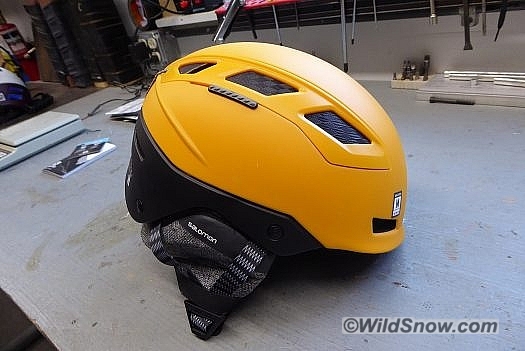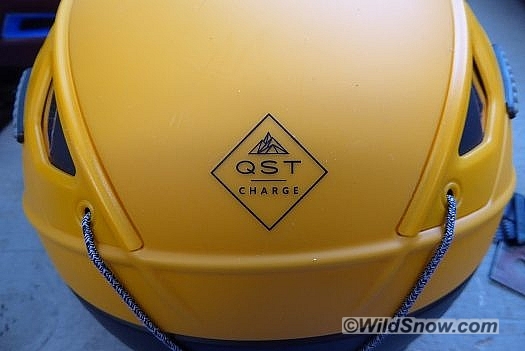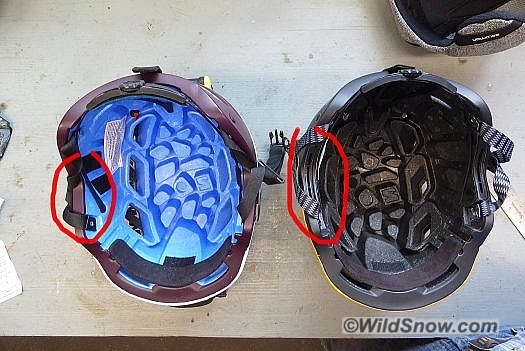There was once a day when Salomon and other “alpine” skiing companies were to backcountry skiing as we are to piloting a space rocket. No mas. Witness Salomon, going for it with their bindings (MTN, Shift), as well as lightweight ventilated ski helmets such as the MTN Lab we’ve been playing with — along with the QST Charge that just dropped here in my studio. Come to think of it, it costs millions of coins to bring these products to retail. I find it hard to imagine that money will ever come back from human powered skiing. But then, I’m only a blogger, not a bean counter.
The Charge hardhat is marketed for “freeride” and only certified for snowsports, while the Salomon MTN Lab helmet is multi-certified for both climbing and snowsports such as ski touring. Near as I can tell with extensive measuring and weighing, in the case of these helmets the certs have more to do with the stickers they’re printed on than differentiating these products. In my opinion the two helmets are equal in their protection levels — for both climbing and skiing.
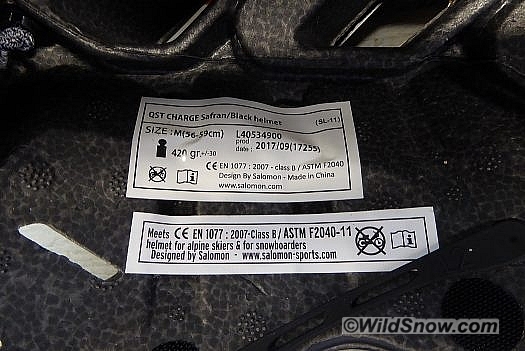
Just a snowsports cert, in this case actually two snowsports certs, EN Class B and ASTM, having both is good, adding the climbing cert would be best.
Caveats: The climbing and snowsports certification standards do have significant differences, so don’t take this too broadly. What appears to happen in some cases, likely for Solomon, a helmet build is adequate for both standards and the company plays around with the nomenclature, as well as avoiding the added expense of multiple certs. (That said, I’m still of the opinion that a multi-certified helmet, snowsports/climbing, preferably with MIPS, is your best bet for the most protection possible. If for no other reason than the rigorous testing entailed by achieving both certs. More here.)
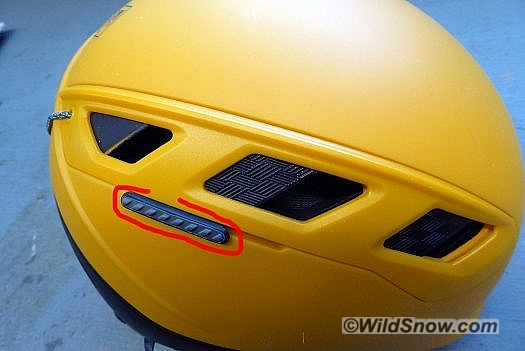
Biggest difference, QST Charge has operable vents. Perhaps ironically, with the vents closed you get much better intrusion protection than the partially blocked vents of the MTN.
Over arching difference is the MTN Lab has fixed intrusion protection bars in the vent holes, while QST has user operated vent closure using similar looking bars. In look and shape the two safety hats are nearly identical. MTN uses a minimalist liner. QST liner overall appears slightly thicker, has more coverage on the rear of your head, and appears to balance warmth and ventilation. QST has perforated ear flaps designed for headphones, MTN does not. Lest we forget, MTN has headlamp strap clips, QST does not. Judicious use of Gorilla Tape creates headlamp “clips” on any helmet.
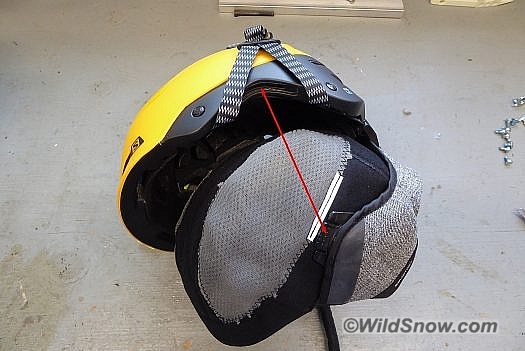
QST liner is obviously offers more balance between venting and warmth.” width=”525″ height=”351″ class=”size-medium wp-image-25139″ /> QST liner is obviously offers more balance between venting and warmth than the minimalist MTN liner. More, arrow in photo indicates tabs on liner that insert in shell slots. These are nice. They keep the liner from moving around after the small somewhat lame hook-loop tabs inevitably fail (they tend to pull off the inside of the helmet shell).
The two contenders weigh nearly the same, and clearly come from the same mold. With liners stripped out, MTN clocks in at 324 grams, QST at 346: that whopping 22 grams (0.78 ounce) is probably the operable vent mechanism. With liners installed, MTN is 372 grams, QST measuring at 416 grams.
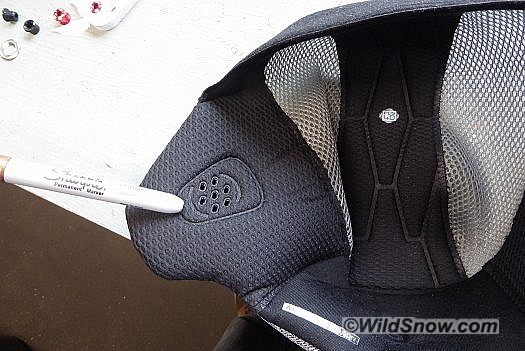
Another difference. QST liner ear flaps are configured to accept helmet speakers. Either hardhat of course works fine with ear buds.
Shopping note: During our helmet evaluations over past months we acquired one brand/model that had a serious but hidden manufacturing defect. One of the rivets holding the chin strap harness was missing a backing washer, thus allowing the strap webbing to easily fail. When you buy a ski touring helmet, inspect the details before use, return if necessary.
WildSnow.com publisher emeritus and founder Lou (Louis Dawson) has a 50+ years career in climbing, backcountry skiing and ski mountaineering. He was the first person in history to ski down all 54 Colorado 14,000-foot peaks, has authored numerous books about about backcountry skiing, and has skied from the summit of Denali in Alaska, North America’s highest mountain.

